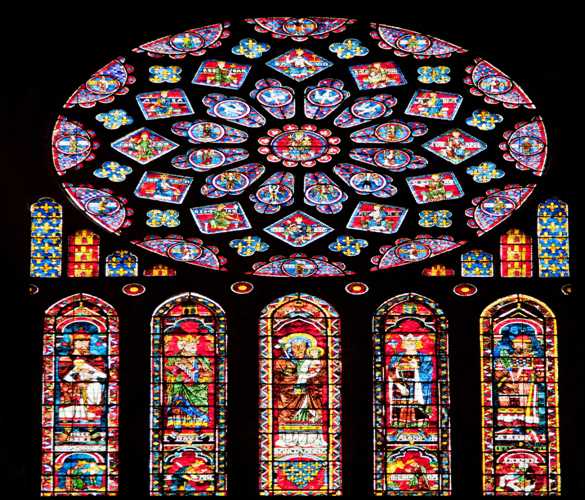Stained glass is a form of art that has been around for centuries. The earliest known examples of stained glass can be traced back to ancient civilizations such as the Egyptians and the Romans, who used small pieces of colored glass to create intricate designs in their mosaics and windows.
However, it wasn't until the Middle Ages that stained glass truly came into its own as an art form. During the 12th and 13th centuries, the technique of creating large, intricate windows using leaded glass was developed in Europe. This technique, known as 'leaded glass,' allowed for the creation of large, detailed scenes and figures in windows, and was used to great effect in the construction of churches and cathedrals.
The invention of leaded glass was a significant milestone in the history of stained glass, as it allowed for the creation of larger, more detailed works of art. The use of leaded glass in church windows was particularly popular during the Gothic period, where it was used to tell Bible stories and convey religious messages to the illiterate population.
As the technique of leaded glass spread throughout Europe, it began to evolve and change. In the 14th and 15th centuries, the use of paint and enamels on the glass was introduced, allowing for even more detailed and intricate designs. This technique, known as 'painted glass,' was particularly popular in the German-speaking regions and the Low Countries.

The use of painted glass and leaded glass continued to evolve and change throughout the centuries, with new techniques and materials being introduced. In the 19th century, the invention of new types of glass and the use of new techniques such as glass fusing and acid etching allowed for even more intricate designs and a wider range of colors.
In conclusion, the invention of stained glass can be traced back to ancient civilizations such as the Egyptians and the Romans. However, it was not until the Middle Ages that the technique of creating large, intricate windows using leaded glass was developed in Europe. The evolution of this technique and the introduction of new materials and techniques, allowing for the creation of ever more intricate designs and a wider range of colors. The stained glass art form continues to be an integral part of architectural, religious, and secular buildings and is still admired and appreciated by people of all ages.